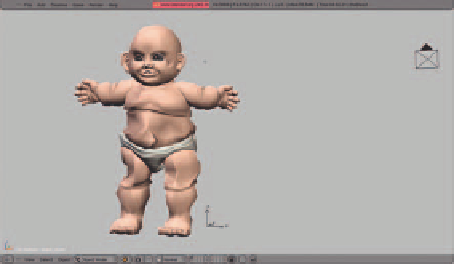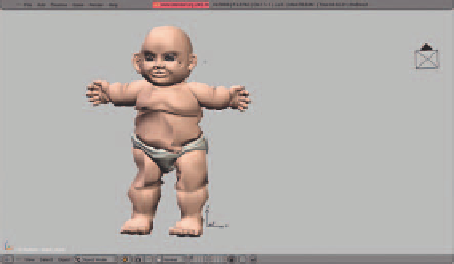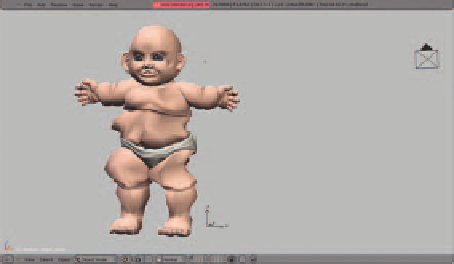Graphics Reference
In-Depth Information
illustration, so you are encouraged to try the fi le “the_beast_softbody.blend” on the included disc. Just open
the fi le and press
Alt-A
with the mouse over the 3D view. The fi rst time you do, the frames will step forward
more slowly as the simulation is calculated, but afterward it should play back at a reasonable rate.
The keys to fi ne tuning a simulation like this are usually the Spring values and the Mass. If you were to turn
the
Mass
value up from the default of
1.0
to
20.0
, the effect is obvious and can be seen in Figure 14.82.
Since the mesh has a greater mass in this simulation, it has more momentum (20 times more in this case!)
causing things to go wild.
Figure 14.82
Err . . . wow? That's just weird
The
Pull
and
Push
values in the cluster of buttons at the bottom of the panel control how strong the “push”
and “pull” forces are that will try to get the mesh back into its original shape. The higher the values, the more
quickly the mesh will return to its default state, and the less deviation is allowed.
Friction
controls how much resistance the air around the object provides as the object moves. Greater values
will cause more “wind resistance” as an object moves.
The Soft Body simulator may be used on an entire object simply by not selecting a vertex group in the
Goal
portion of the panel. When used without a vertex group, the entire object is considered a single Soft Body
and will react accordingly.
Soft Bodies react to forces and defl ection objects just like cloth and particle systems.




Search WWH ::

Custom Search